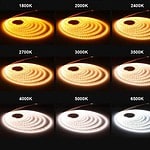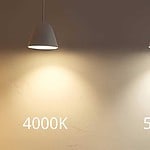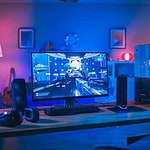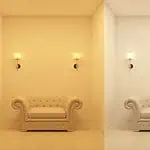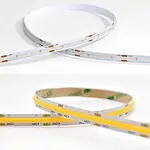Light color plays a crucial role in creating the appropriate ambiance of a space. And if you can choose the right light color, it can impact the atmosphere and productivity. That is why knowing about the LED light color, its meaning, and its usage is a must in choosing any fixture.
White color LED lights are the most used ones for general lighting. This plane of white light also has different tones like warm, cool, and daylight. Each of these tones has a varying impact on human mood. For instance, warm white creates a sense of coziness, and so it is best for bedroom lighting. Again, cool white makes you feel energetic. That is why these are used in office rooms to increase productivity. Likewise- green, red, blue, yellow, etc. LED light colors have their own impact on the space.
In this article, I will discuss different LED light colors and the appropriate places to use them. So, let’s begin-
LED Light Colors – The Basic
LED lights are available in different colors. The color of light changes depending on the semiconducting materials and energy band gap. In this section, I will give you a brief overview of the relationship between different semiconducting materials, their wavelength bands, and the resulting LED light colors; check this out–
| Semiconducting Material | Wavelength Band | Color Of LED Light |
| GalnN | 450 nm | White |
| Sic | 430-505 nm | Blue |
| AlGaP | 550 – 570 nm | Green |
| GaAsP | 585 -595 nm | Yellow |
| GaAsP | 605 – 620 nm | Amber |
| GaAsP | 630-660 nm | Red |
| GaAs | 850 – 940 nm | Infrared |
Types Of LED Light Color
LED lights have a diverse range of colors, each with its unique characteristics. So, understanding these types of LED light colors is essential for choosing the right light color for your space or project. Below, I will explore some of the most common LED light colors; check this section out–
White LED
White LED lights are a versatile option that provides a neutral and clean brightness, perfect for multiple settings. A balanced blend of colors characterizes these types and creates a pure white light. This neutral ambiance created by white lights makes it the most suitable choice for general lighting-
- Warm White LED Lights
Warm White LED lights offer an inviting and cozy glow that is similar to traditional incandescent lighting. These LEDs have a color temperature generally ranging from 2700K to 3500K. And they produce a soothing and yellowish vibe.
Besides, warm white LEDs are perfect for creating a relaxed and comfortable atmosphere in homes, restaurants, and bedrooms, providing warmth and intimacy. For this, Dim To Warm LED Strip can be your best lighting for residential spaces. The CCT of these strip lights ranges from 3000K to 1800K. So, you can get a wide range of warm hues and CCT adjustable features with these lights. To know more about it, read Dim To Warm – What It Is and How Does It Work?
- Cool White LED lights
Cool white LED lights produce a clean and crisp illumination with a color temperature of 3500K-5000K. They have a bluish tone in the hue, which makes them ideal for task lighting. Cool white lights create an energetic environment that can boost productivity. This is why these are considered best for school and office lighting. You will also find them in labs and other places where full concentration is essential. Apart from this, cool white lights are also abundantly used in residential and commercial areas, especially in the garage or parking lots. Besides, cool lights are also used in industrial areas.
- Daylight White
Daylight White LEDs imitate the natural sunlight with a color temperature of 5000K to 6500K. They offer a bright, refreshing, and cool white light, closely resembling the midday sun. In addition, these LEDs are favored in environments demanding high energy. These lights are ideal for any space that requires bright white lighting.
Apart from all these, if you want CCT adjustable lighting for your space, go for a Tunable LED strip. With these lights, you can create any white hue for your area. Tunable white LED strips come in two CCT ranges- 1800K to 6500K and 2700K to 6500K. That is, you can see, by getting these strips, you can get warm, cool, and daylighting effects all in a single fixture. To learn more, check this- Tunable White LED Strip: The Complete Guide.
Colorful LED
This type of LED light can enhance aesthetics and provide many practical benefits for various settings. You can choose different or combined colors for your space. However, these colored lights can either come in a single color or with multiple color-changing features.
- Single Color LED lights
Single-color LED lights provide you with only a specific light color, so they are also known as monochromatic light. These are the simplest forms of light that you can use for undercabinet lighting, general lighting of the staircase of restaurants or other commercial spaces, etc. Besides, you can also use them for the following purpose-
- Merchandise or art display
- Home decoration
- Outdoor Lighting
- Billboards and signage
- Shop Lighting
- Stage design
- RGBX LED lights
The term RGB stands for red, green, and blue. RGB lights combine the three primary colors to produce different lighting. For instance, mixing green and red light in equal proportion brings out yellow lighting. You can also get white light from RGB when all three primary colors are mixed at the right proportion at higher intensity. In this way, using RGB lights, you can create up to 16 million different light hues! You can use this lighting for restaurants, bars, hotels, clubs, or even in your bedroom if you want colorful lights. RGB lights are also a popular option for stair and festival lighting, i.e., Christmas.
Besides, with RGB light, white or other diodes are also added that we term as RGBX lights. These can be RGBW, RGBWW, etc. To learn more about these lights, check this – RGB vs. RGBW vs. RGBIC vs. RGBWW vs. RGBCCT LED Strip Lights.
LED Light Color: What They Mean?
LED light colors carry significant meaning and can profoundly impact the ambiance and functionality of your space. If you want the right lighting for your certain space, it is essential to understand the meanings behind these colors:
| LED Light Color | Meaning | Impact On Mood |
| White | Neutrality, Cleanliness, | Creates a sense of clarity and alertness. |
| Red | Alertness, Warning, Passion, love, strength | Sense of urgency and romanticism |
| Blue | Loyalty, peace, trust | Associate with calmness and feel safe at peace |
| Green | Peace, Money, Safety, Fresh, Natural | Stay in touch with nature, and helps you to reduce stress |
| Yellow | Happiness, Warmth, Friendly, Caution, Creativity, Energy | Brings energy and creativity to life |
| Orange | Success, Confidence, Vibrance, Innovation, Health, Cheerful | Sense of warmth and coziness |
| Purple | Luxury, Creative, Royalty, Fashion | Associated with spirituality and a sense of imagination |
Where To Use Warm, Cool, Daylight, & RGB LED Lights?
Where to use warm, cool, daylight, and RGB LED lights depends on your specific atmosphere and purpose. Some ideas are as follows–
Use Of Warm White LED Light
Warm white lights are popular for their yellowish cozy lighting. You can select these lights for any room if you want to make the area calming and welcoming. Typically, warm light colors are used for residential applications or hospitality places. These lights are best for your bedroom to help you relax and relieve anxiety. In fact, it is scientifically proven that warm lights are suitable for the sleep cycle.
Plus, the orange-yellow hue of this color temperature keeps a lower strain on the eyes. However, warm lights have different lighting output depending on the CCT. Lower CCT gives more orangeish lighting, and higher warm CCT is yellowish. Check this article to pick the best one for your space- 2700K VS 3000K: Which One Do I Need?
Application Of Warm White LED Light
- Residential Outdoor
- Residential (bedroom, kitchen, bathroom, closet, living room)
- Hospitality (Hotel)
- Restaurants
- Reception Areas
- Spaces with Earthy Tones
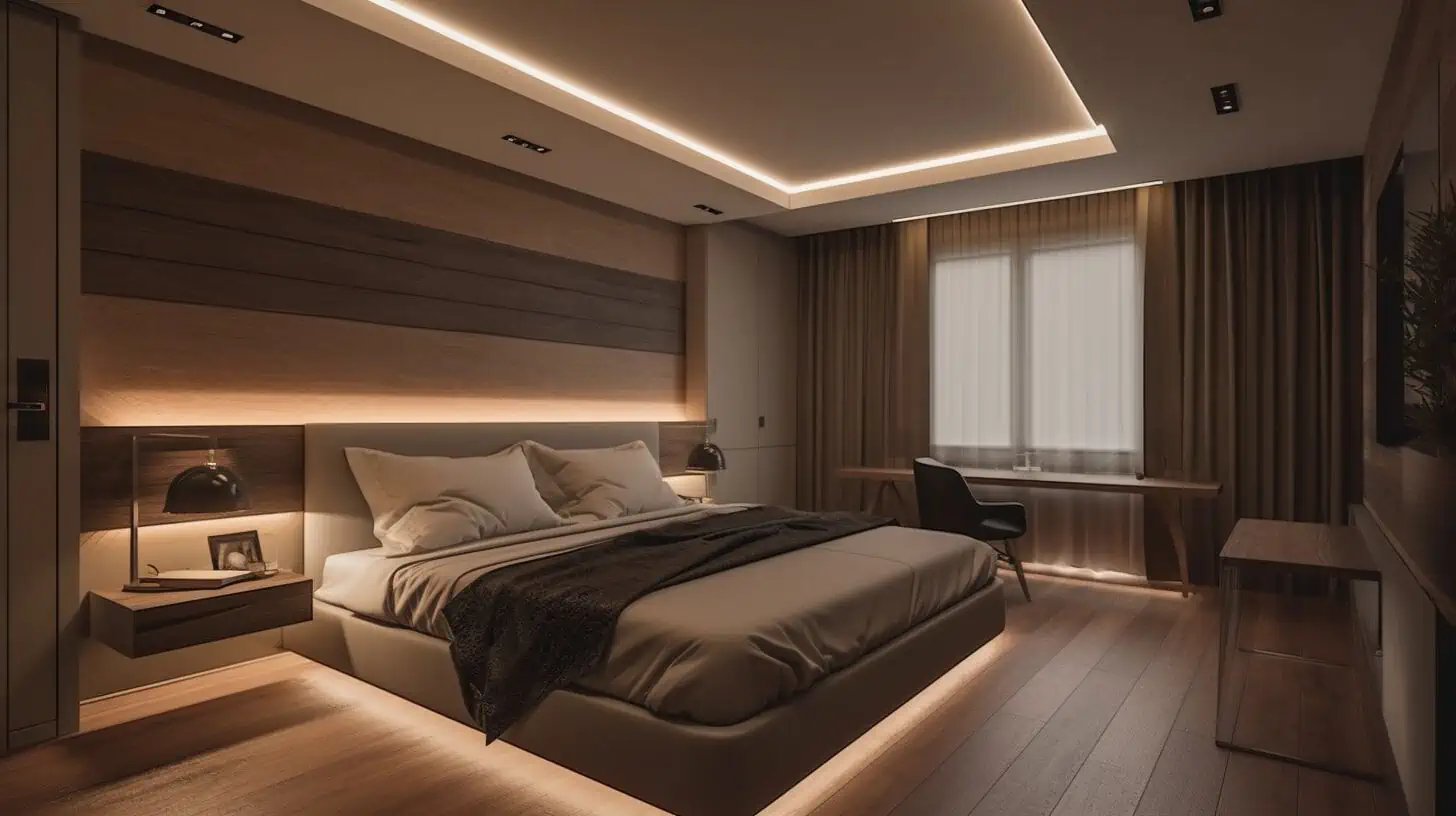
Use Of Cool White LED Light
If you want to create a more productive environment, you can choose cool white lights. Apart from warm white, these LED lights are most widely used. They provide a clean and efficient look.
In addition, these lights are perfect for a workspace or busier place. You can use these lights from late morning to noon when productivity improves. These lights are also best for specific residential settings. Places like your garage and kitchen are an excellent match for cool white LED lights. These locations are at your home for utility reasons.
However, mainly, these lights are used in hospitals, office spaces, stores, shopping centers, etc. If you are confused about which one to choose, check out this article- Warm Light vs. Cool Light: Which Is Best and Why?
Application Of Cool White LED Light
- Work Space
- Residential (modern kitchen)
- Retail
- Medical
- Educational
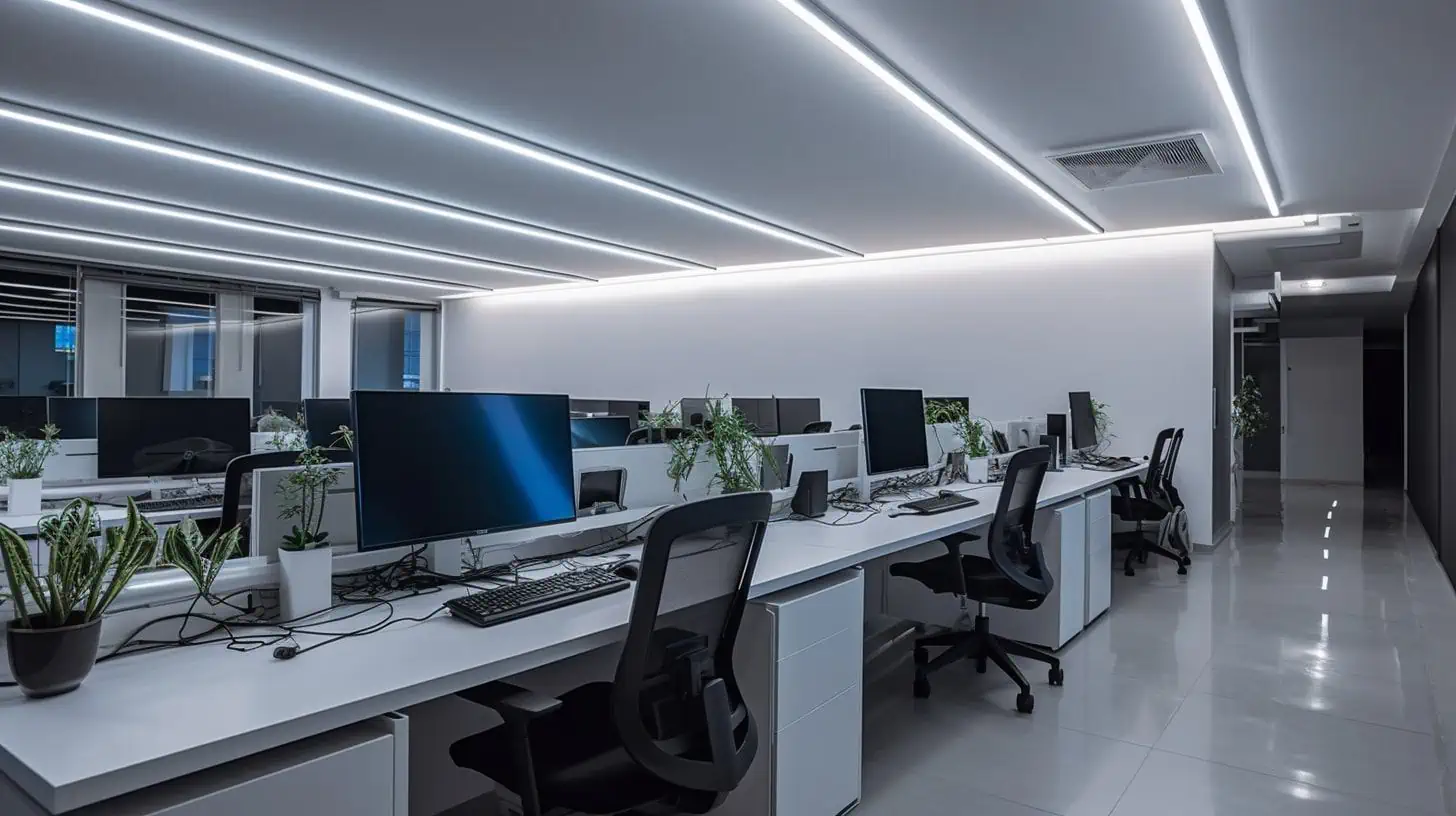
Use Of Daylight LED Light
Daylight white light is often used in areas where accurate color representation is essential. You will find these lights in areas like- art studios, photography studios, and environments where tasks require precise color discrimination. It’s also used to mimic natural daylight indoor lighting.
Also, these light temperatures work well to brighten up large places. For instance, parks, parking lots, production lines, factories, floodlights, etc., are a better match for day white LED light. For a better understanding of daylight, check this- Soft White Vs. Daylight – What’s The Difference?
Application Of Daylight White LED Light
- Retail Displays
- Hospital
- Museums
- Jewelry Displays
- Gyms
- Office Spaces
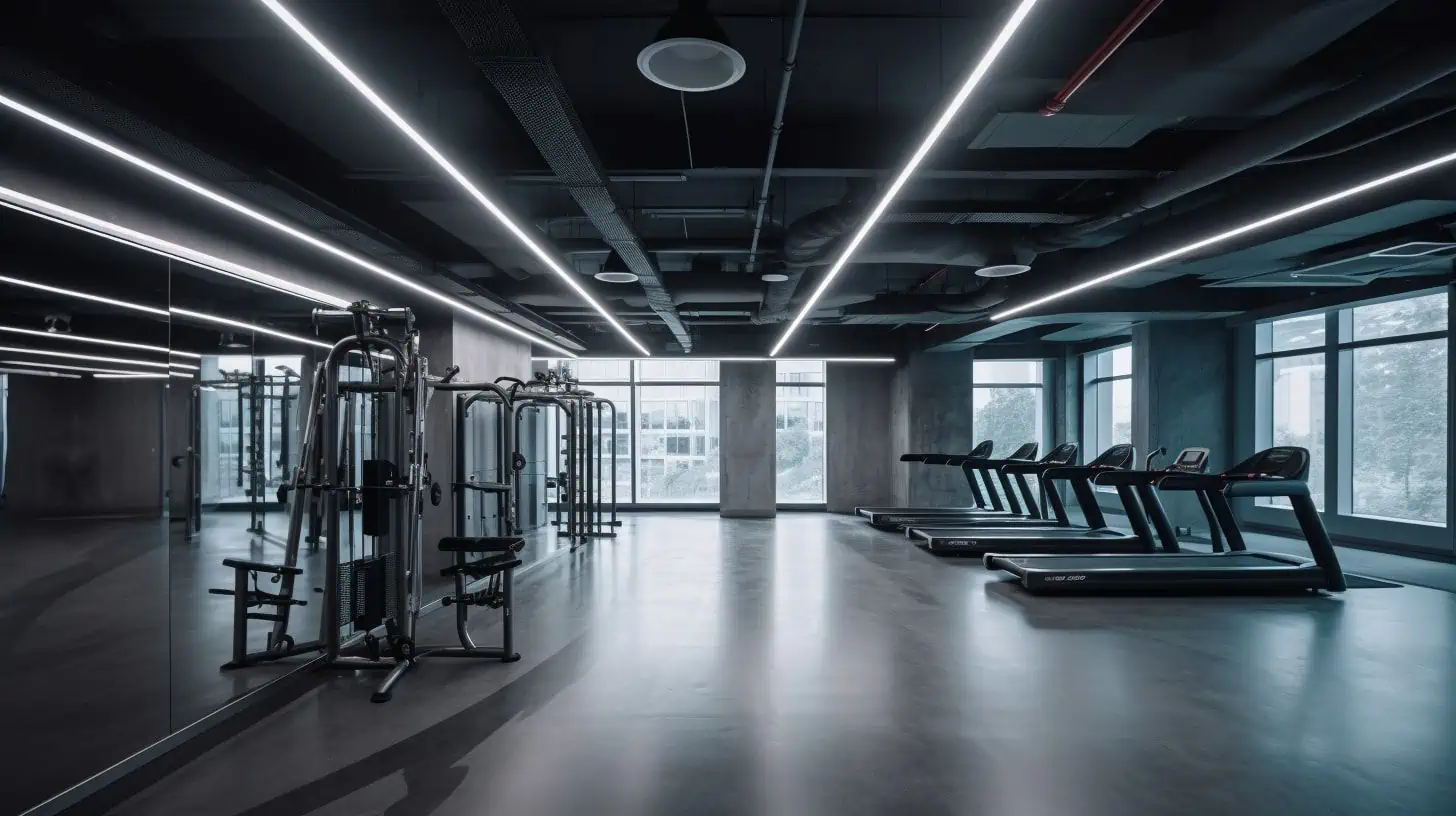
Use Of RGB LED Light
The increasing popularity of these types of lights is because of aesthetic or decorative reasons. The RGB LED area can change light colors, and you can install these in a single area while generating several moods.
Besides, you can set RGB LEDs for residential use, like living rooms and bedrooms, for mood illumination. Also, creating a floating effect with LED strips on walls and behind furniture or TV is a popular lighting option. You can also use these fixtures for car lighting, for instance- installing RGB strip lights under the seaters or beneath the car. However, for car lighting, you should go for 12V fixtures. Check this for details- The Complete Guide to 12 Volt LED Lights for RVs.
Application Of RGBX LED lights
- Restaurants/Bars
- Signage
- Bedroom
- Behind TV/Monitors
- Kitchens
- Outdoor Areas
- Cars
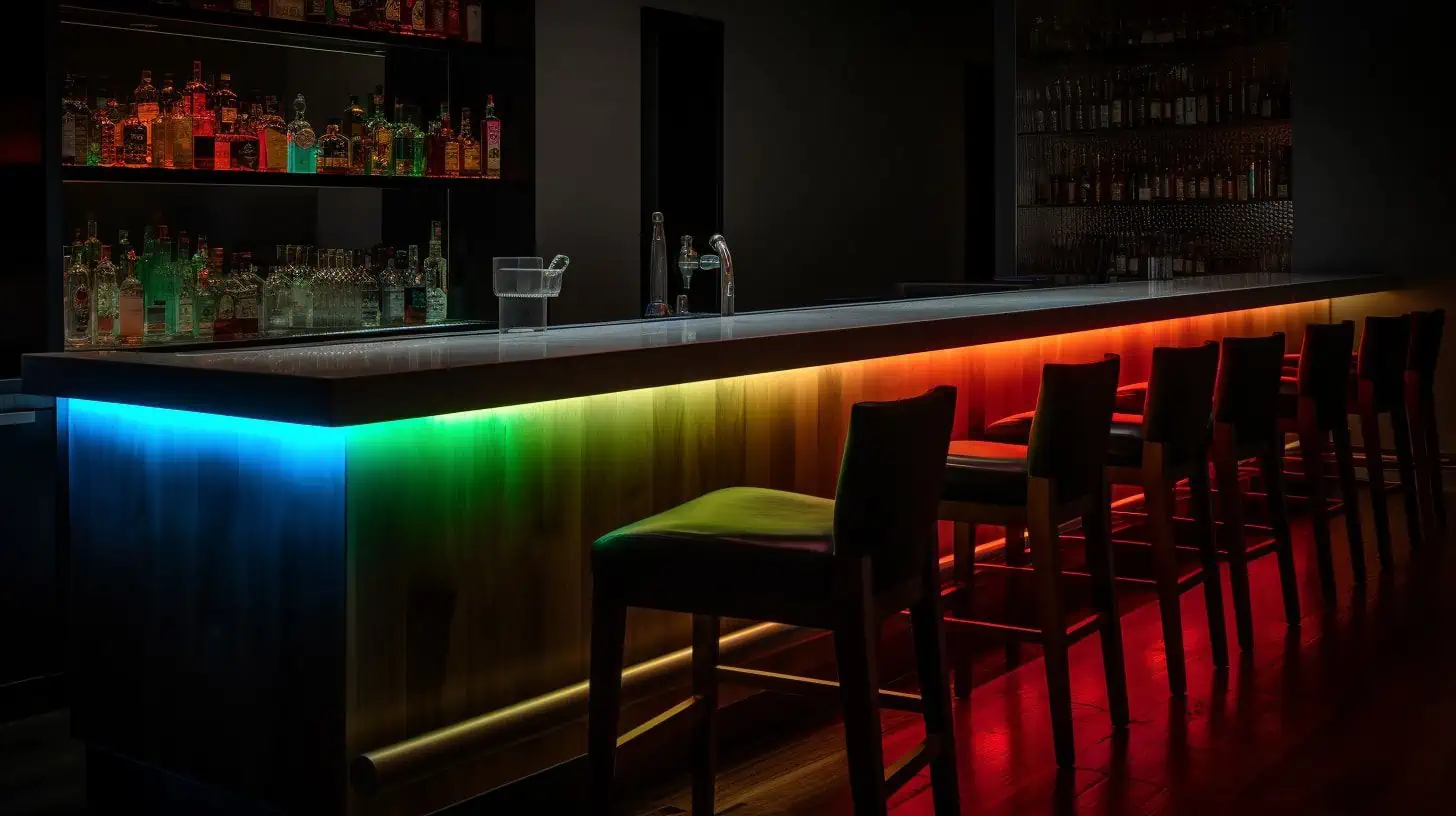
Factors To Consider While Choosing LED Light Color
A wrong light color can ruin the entire ambiance of the room. That is why you should wisely decide the color of LED light. Here are some factors considering which you can get the best output-
Environment Of The Lighting Location: Before choosing an LED light color, the first thing you need to do is decide in which location you want to install it. So, think about whether the lighting will be placed in a home, office, retail space, or outdoor setting. Each environment may have different requirements for lighting. For instance, residential spaces often benefit from warm and inviting light, while offices or workspaces need cooler, more focused lighting for productivity. Therefore, the context of the lighting location sets the tone for the type of LED light color you should choose.
Color Temperature: This refers to the certain tint of white light produced by LEDs. With cooler light temperatures, you can create a vibrant, bluish-white, and energetic environment. On the other hand, a warmer light color provides a yellowish-white, cozy, and welcoming atmosphere. So, you can choose one or both temperatures for specific purposes based on your preferences.
CRI Ratings: The Color Rendering Index (CRI) assesses how accurately a light source can reproduce the genuine colors of objects when compared to natural lighting. LEDs that have higher CRI scores create more genuine and vibrant colors. It improves visual perception and provides more precise visual representation.
Dimmability: The features to adjust the brightness of your LED light can significantly impact the atmosphere and functionality of a space. With the dimmable LEDs, you can create the perfect ambiance for multiple activities. So, while choosing an LED light, search for a dimmer option if this feature is essential for your application.
Color Control: LED light comes in a wide range of color options; you can select one from cool to warm white or even RGB. Also, you can consider if you need a fixed color or the ability to switch between different hues. This way, with the color control option, you can create an aesthetic play in restaurants, entertainment venues, or architectural lighting.
Smart LED Color Features: With the increasingly advanced technology, LED lighting has also evolved to offer smart features. For instance, smart LED lights can be controlled remotely through smartphones or voice commands. Also, this function will allow you to customize color changes, scheduling, and automation. This way, you can enhance convenience and energy efficiency. So, when considering smart LED features, compatibility with your existing smart home ecosystem or platform is essential. Thus, you can choose LED strip lights; check this- The Ultimate Guide To Addressable LED Strip.
FAQs
A warm or soft white of CCT 2700K to 3000K is the best LED light color for a bedroom. The yellowish hue of these lightings creates a cozy ambiance and helps you to relax. Also, they are ideal for winding down and promoting a peaceful night’s sleep. However, going for tunable white lights is best for bedrooms. You can use warm light when sleeping and switch to a cool hue for task lighting.
The choice of LED light color depends on your specific needs and preferences. Warm white LEDs (around 2700K) create a cozy, ambient atmosphere. And they are best for residential and hospitality businesses. Cool white (4000K) is suitable for task lighting, and you can use these offices or any productive areas. RGB LEDs offer a variety of colors for mood lighting. So, consider your intended use and likes when selecting LED colors.
LED lights are available in various colors, including different tones of white, red, green, blue, yellow, and more. Besides, you can also get customized LED light colors through RGB LED strips. For instance, you can create 16 million hues with RGB LED strip lights.
The choice between red and blue LEDs depends on the specific application. Red LEDs are efficient for displays, optical communication, and some medical devices. These are widely used as indicators and brake lights in automotive applications. Besides, to seek attention in a crowd, red lights work excellently. On the other side, blue LEDs are crucial for white LED production, data storage, and Blu-ray technology. These are commonly used in displays, screens, and digital devices.
For study purposes, you can choose cool-white LED lighting with a color temperature between 4000K and 6500K. This light provides a bright and alert environment that keeps your concentration while studying. Using warm or low CCt lights will make you feel sleepy while studying. But a cool-white light will keep you energetic and thus boost productivity; you won’t feel sleepy.
The best light for the eyes is natural lighting, particularly sunlight. However, warm or soft light of color temperature 2700K-3000K (Kelvin) is also a great option that reduces eye strain. Besides, this light also helps you to improve your sleep cycle. However, you should avoid using blue lights; blue light rays are bad for your eyes.
Red light is generally not harmful to the eyes. It has a longer wavelength and lower energy compared to harmful ultraviolet and blue light. Often, red light is used in therapy and has minimal impact on eye health when encountered in everyday situations.
The color of 5000 Kelvin is natural daylight. It mimics the natural lighting of the sun. It has a tint of blue that provides a bright and crisp illumination. You can use these lights in places where color distinction is essential. For instance, 5000K is an excellent CCT for museum lighting.
Blue LED light is best for acne treatment. It decreases the activity of the sebaceous gland and thus prevents oil production in the skin that clogs hair follicles and causes acne.
Though 6500K gives you daylight stimulation, prolonged exposure to this CCT can cause eye strain. The bluish ray of this light is not suitable to bear for a long time. You may face headaches and eye issues due to overexposure to these lights. Besides, this also disturbs your sleep cycle.
Sum Up: The Color Is Up To You
Everyone has their preferences about lighting color temperatures. And the excellent thing is you can choose multiple light colors in various places of a project. For instance, your office color temperature does not have to be similar to the reception place or with other rooms. You can explore different color temperatures for different areas.
Besides, for residential use, you can select kitchen lighting that differs from the living room. This way, you will make a variation in your light temperature and create a unique atmosphere. However, you must ensure the overall output doesn’t look messed up. For this, you can combine various white light colors and include some RGB lights.
Nevertheless, LEDYi has got the best lighting solution for you. Whatever LED color you require, we are here to provide you with the best quality. Our top-notch tunable white LED strip lights come with adjustable CCT; you can bring warm to cool light colors with this. Besides, if you want a more warm lighting option, we have dim-to-warm LED strips. These lights bring you a wide range of warm hues. Apart from all these, go for our RGBX LED strips if you want colorful lighting. Lastly, we also have addressable fixtures that will blow your mind! So, without any further delay, place your order now!

